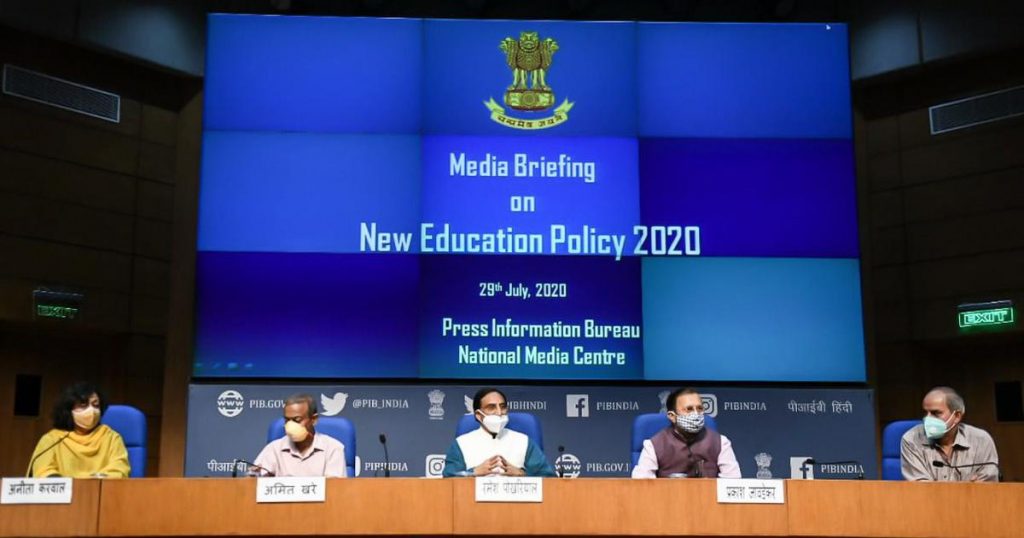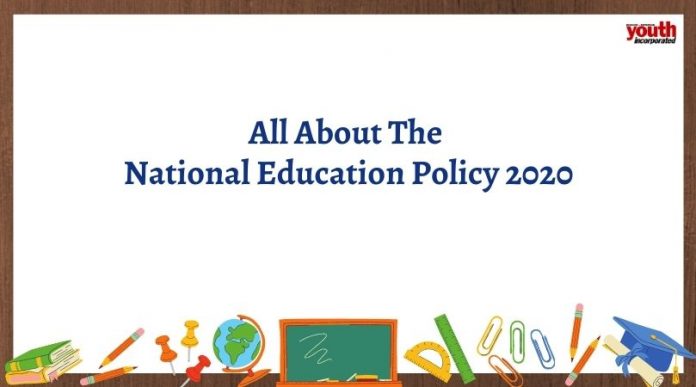On 29th July 2020, the Education Ministry, formerly known as the Human Resource Development Ministry rolled out a new National Education Policy of 2020 under the governance of PM Narendra Modi. The National Education Policy was first drafted in 1986 and revised in 1992.
On Thursday, two key events were introduced in the Indian system. A ministry that was known as the HRD or Human Resource Ministry was renamed as the Education Ministry or the Union Ministry of Education after the approval of the Union Cabinet. The second was the introduction of the National Education Policy of 2020. Bringing about key modifications in the old NEP was a part of the Bhartiya Janta Party’s (BJP) agenda ahead of the 2014 general election. Acting on this, the ruling government of BJP has modified NEP after 34 long years realizing that the Indian Education System requiring ramping up and coming in par with the other nations’ education systems.
The newly introduced National Education Policy is set to bring about a holistic change in the current education system. The NEP of 2020 aims at achieving 100% youth and adult literacy in the country. Moreover, the policy also aims to increase public investment in the education sector from the current 4.3 percent to reach 6 percent of GDP soon.
In addition to this, with the outbreak of coronavirus, authorities have also started working on speeding up the digital and online learning by setting up the National Educational Technology Forum (NETF). While announcing the policy, Amit Khare, Higher Education Secretary said, “E-courses will be developed in eight regional languages initially and virtual labs will be developed.”

Given below are the highlights of the National Education Policy of 2020
- The 10+2 structure will now be replaced by 5+3+3+4 curricular structure. Under this, the level of education has been divided into four stages.
- Foundation stage: 5 years (3 years (Anganwadi/Preschool/ Balvatika), (2 years (class1&2))
- Preparatory stage: 3 years (class 3-5)
- Middle Stage: 3 years (class 6-8)
- Secondary stage: 4 years (class 9-12)
- Class 12 onwards: Graduation.
- Students will now have options to choose Major and Minor subjects right from school level (example: Major in Physics and Minor in Music). Students will be enabled to opt for vocational courses after class 6.
- The structure of board examinations will too be subjected to changes. 10th and 12th board exams will be continued, however, they will hold less relevance from now onwards. The examinations will be much easier and its syllabus will undergo a reduction to core concepts. Further, more importance will be given to student’s knowledge application. Board exams will be held in two languages. Each subject offered in the board exam will have an objective, as well as a description exam. This eliminates the need to simply rote learn textbooks. The other school exams will be conducted held in class 3, 5, and 8 semester-wise twice in a year.
- The primary medium of instruction will happen through mother tongue or by the use of regional language till grade 5, but preferably till Grade 8 and beyond. Sanskrit will be made available at all levels of school and higher education as an optional subject, including in the three-language formula. Apart from Sanskrit, all Indian languages and literature too will be available as options for students. No language will be forced on students. The option of choosing to learn a foreign language too will be offered but at the secondary level.
- From grade 6 onwards, students will be made to learn the coding language and other uses of computer. Further, students will also be allowed to begin with internships from grade 6 to ensure holistic development and real-world application of knowledge learned in school.
- The structure of the report card and marking system will too be changed. To test the analysis, critical thinking, and conceptual clarity of students, a more competency-based regular assessment will be conducted. To make this happen, a new National Assessment Centre, PARAKH (Performance Assessment, Review, and Analysis of Knowledge for Holistic Development), will be established as a standard-setting body.
- Several changes have been made in the higher education sector as well. From now a bachelor’s degree will be 4 years long instead of 3 years. Under this, a multiple entry and exit system has been put in place where after the completion of one year of the degree course, students will be provided with a certificate, a diploma after the second, a bachelor’s degree on completion on three years and a Bachelor’s degree with Research on completion of all four years. The post-graduation courses will be one or two years long. There will be one common entrance exam for admission into higher education institutions. The course of Master’s of Philosophy will no longer exist. Further, all higher education institutions will be governed by a single regulator, except the medical and legal institutions. Those who drop out in the middle of the course can resume with it without having the need to start fresh as all the academic credits of students are to be saved in DigiLocker, developed by India’s Ministry of Electronics & IT, is a digital locker for issuance and verification of documents and certificates.
- To put technology to its best use, an autonomous body known as the National Educational Technology Forum (NETF), will soon be set up to provide a medium to enhance learning, assessment, planning, administration. Integration of technology will take place at all levels of education to improve classroom processes, support teacher professional development, ramp up educational access for disadvantaged groups and streamline educational planning, administration, and management
- The National Education Policy of 2020 aims to boost the Gross Enrolment Ratio (GER) in the higher education sector including vocational education to 50 percent by 2035. At least 3.5 crore new seats are going to be added to higher education institutions.
- Further, to maneuver the functioning of higher education, a single overarching umbrella body will be set up under the name of the Higher Education Commission of India (HECI) but will exclude medical and legal education. HECI will carry out its responsibilities via faceless intervention by making the use of technology and will hold the authority to penalize higher education institutions for not abiding by the norms and standards.
- Under the policy, world’s top 100 universities will be able to now set up campuses in India through a new law, further widening educational opportunities for students.
By the looks of it, the National Education Policy of 2020 is surely going to bring about a positive transformation in the Indian education system making the students’ lives and their careers more rewarding.






























